Background:
In my last post, I compared an AMS Performance intake, without its enclosure, to an APR PEX open intake.
I had mentioned I was curious about how the APR PEX intake would perform since a customer of Equilibrium Tuning’s had been troubleshooting an underperforming turbocharger with EQT’s help, and they had concluded it was the customer’s APR open intake causing a high turbocharger wastegate duty cycle. (Also detailed in the Real World Data – Check #6 post)
The customer had swapped to a Blaze ATOM Race intake and found that their wastegate duty cycle (wgdc) dropped between 20% and 25%.
I have tested both the APR open intake and Blaze ATOM and have found that they don’t differ dramatically in terms of pressure loss when joined to a simulated hybrid turbocharger compressor inlet.
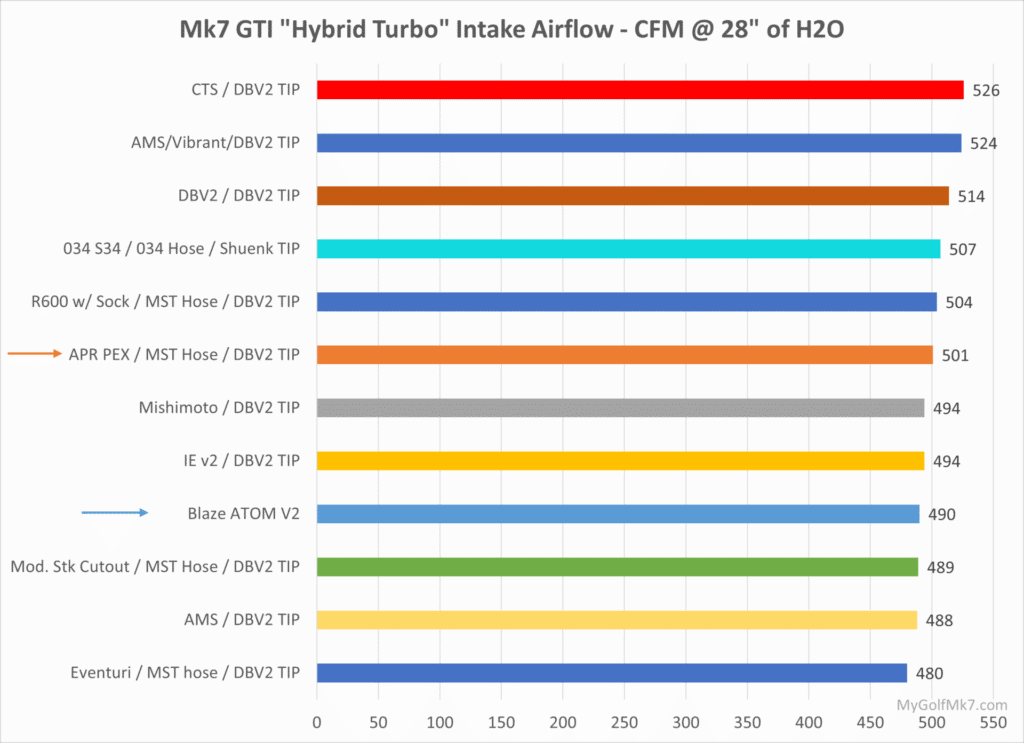
I decided to try to replicate this customer’s results using my GTI.
Test Setup:
The Mk7 GTI is equipped with the following parts and ECU tune:
- Russell Road & Racing E30 Tune
- Mabotech M520h hybrid turbocharger
- Intake 1 – APR PEX intake / MST Inlet Hose and V2 TIP
- Intake 2 – Blaze ATOM intake
- aFe Power Charge Pipes
- Mabotech Stock Mount IC
- MPI / RS3 LPFP / HPA HPFP
- Baun Performance 4″ GESi Cat DP / 3.5 ” mid-pipe
- AWE track exhaust
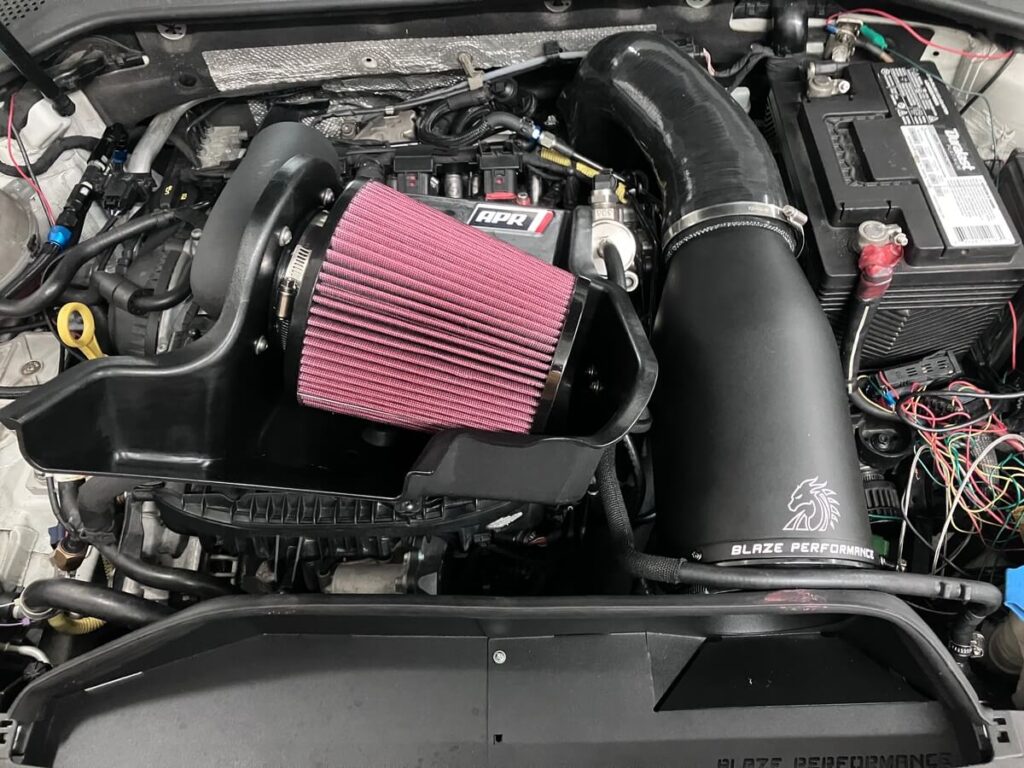
In the previous post, I discussed collecting street data using the APR open intake.
The APR intake was removed, and the Blaze ATOM Race V2 intake was installed.
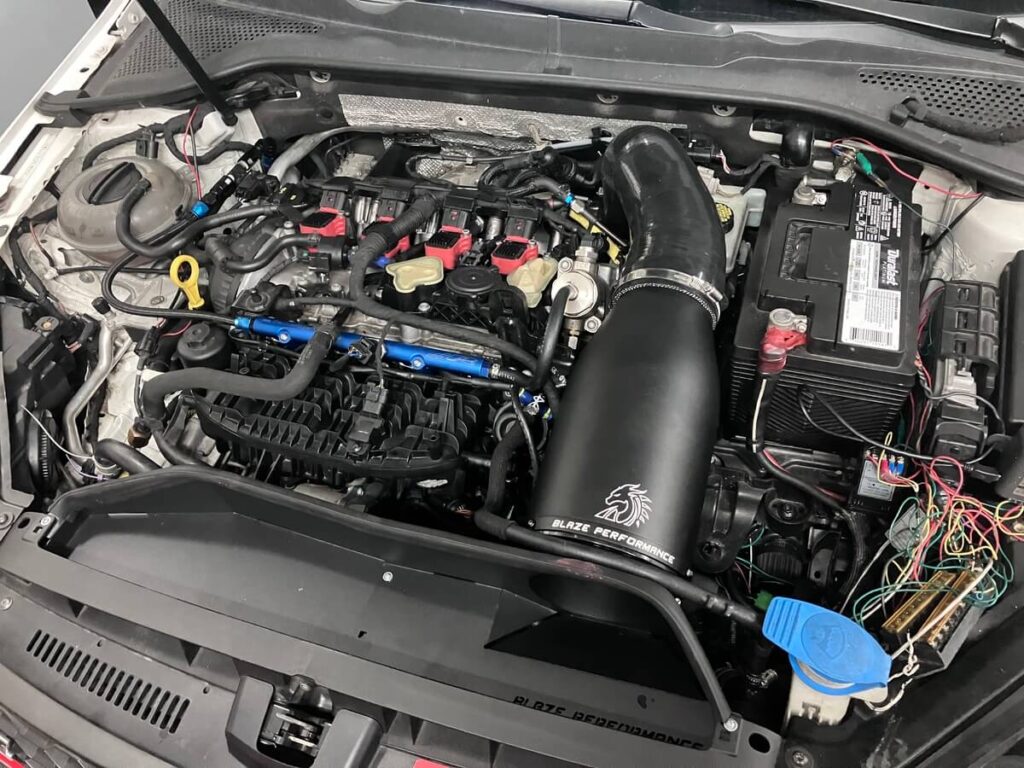
Performance data was then recorded on the street during third-gear full-throttle pulls.
Test Results:
Below is an overview of one data collection session using the APR open intake. This illustrates the process followed using each of the intakes.
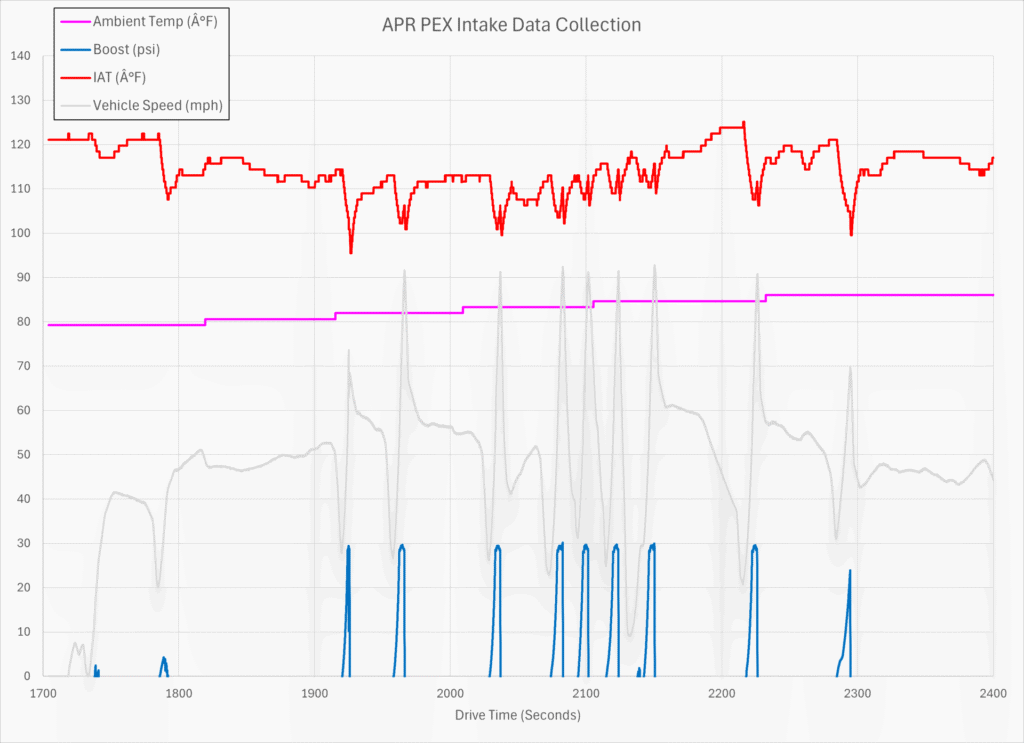
The temperature of the outside air can affect the WGDC. Cooler air is denser and requires less work from the turbocharger compressor to raise the pressure to the ECU’s target value. For this reason, recording data under similar temperature conditions was important to control.
During the first recording session with the Blaze ATOM, the outside temperature was nearly 10F lower than when recording the APR open intake data.
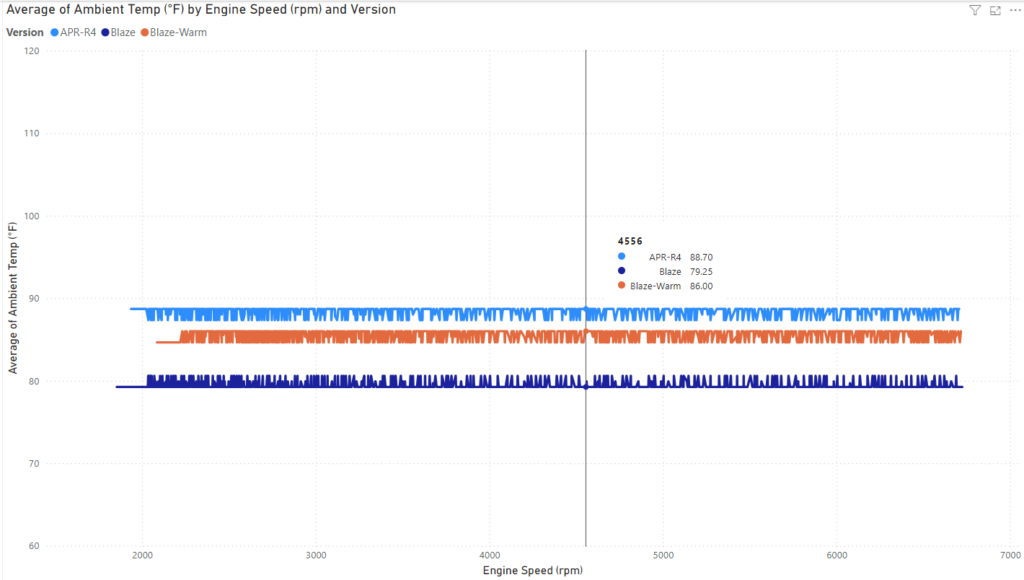
A second session was made with the Blaze ATOM, during which the outside temperature was closer to that of when the APR intake had been used.
For the comparison of the Blaze to the APR intake, the warmer weather data is used, but the cooler air was not significant enough to have a large effect on the WGDC, as shown by the comparison below:
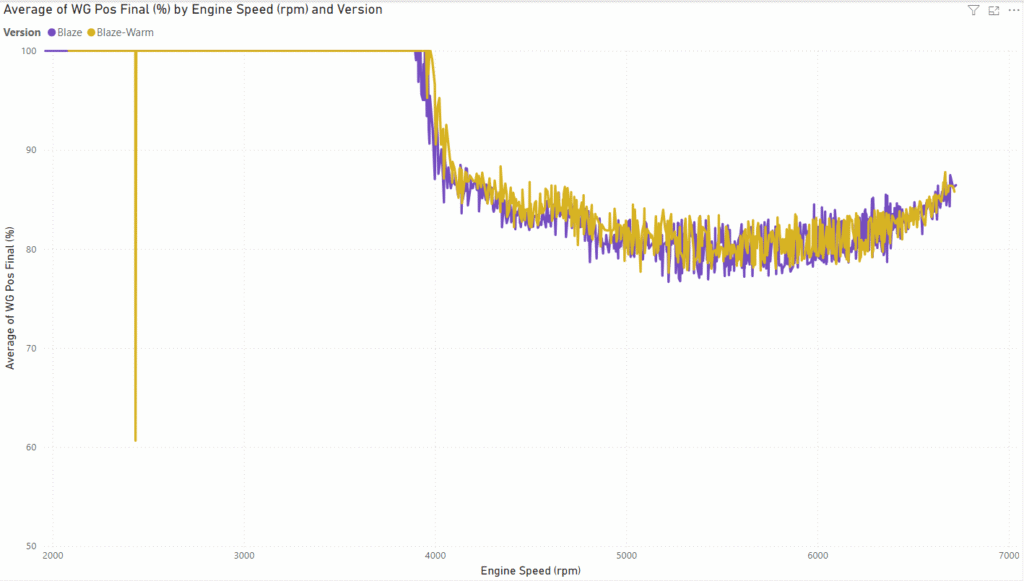
The Intake Air Temperature (IAT) post-intercooler is also compared. Interestingly, even though it was slightly cooler when operating with the Blaze, the IAT was somewhat higher when using it.
This difference in IAT is also small, as there is an overlap between the average IAT for each intake.
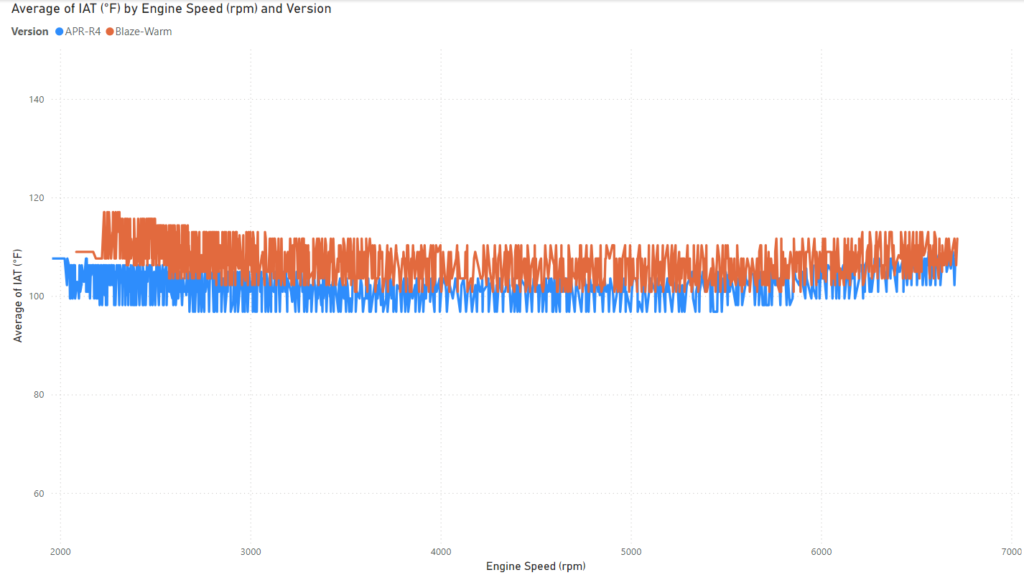
This small difference may be attributable to the APR intake previously having shown a slightly lower pre-turbo air temperature at the end of a pull compared with the Blaze ATOM.
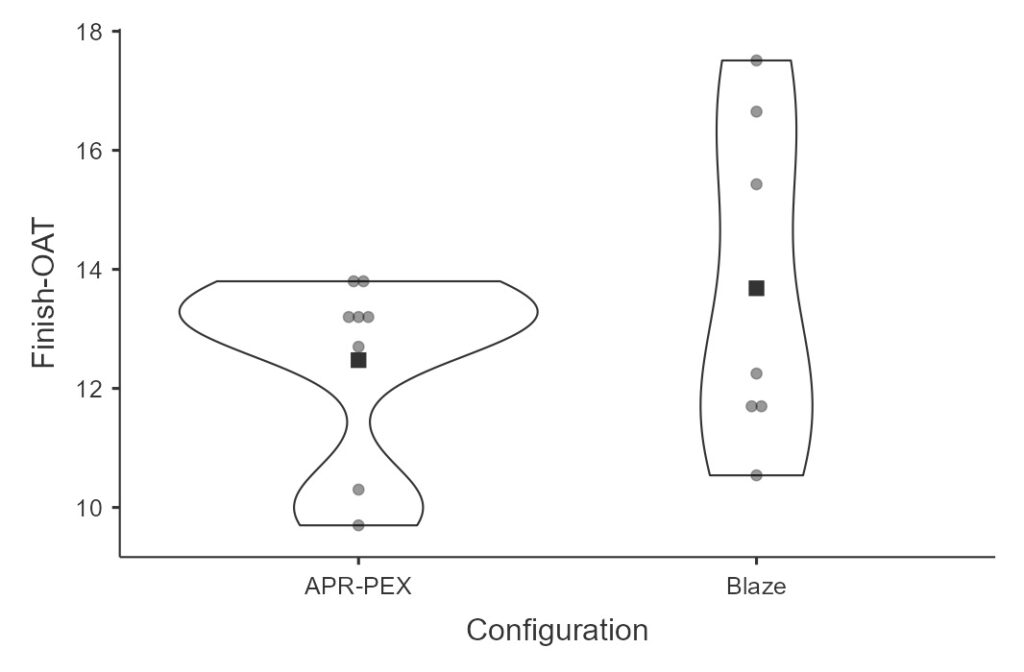
The boost pressure curve is similar for each intake, with slightly more variation when using the Blaze intake. I don’t believe this difference is meaningful; it is only evident because the boost curve when using the APR intake was very steady.
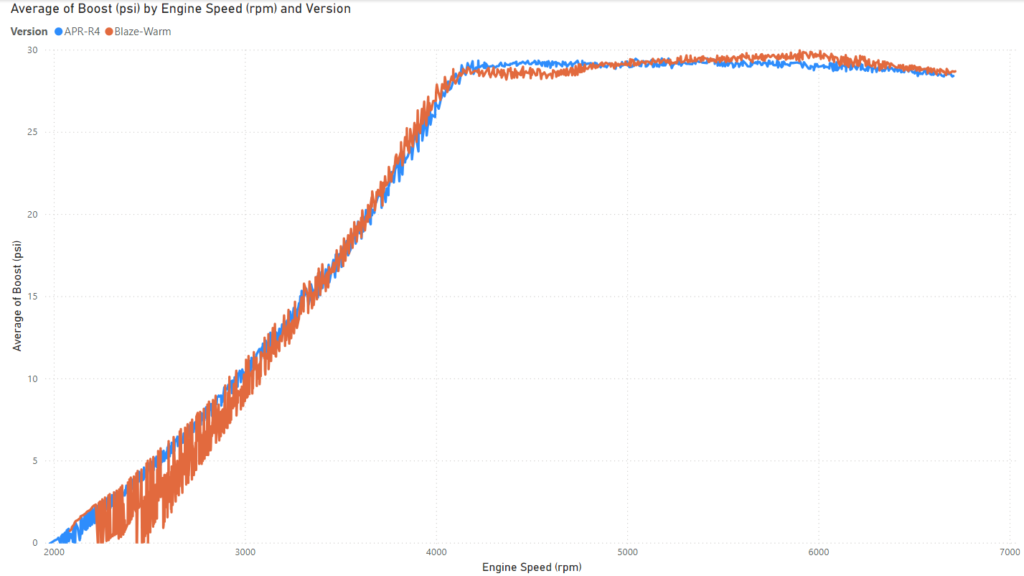
The variable of interest, the one that EQT’s customer had seen a significant change of, is the WGDC.
This variable shows a slight difference over a portion of the pull but equal performance over roughly half. Most significantly, at the top end, where pressure loss effects are most significant, there is no apparent difference between the averages.
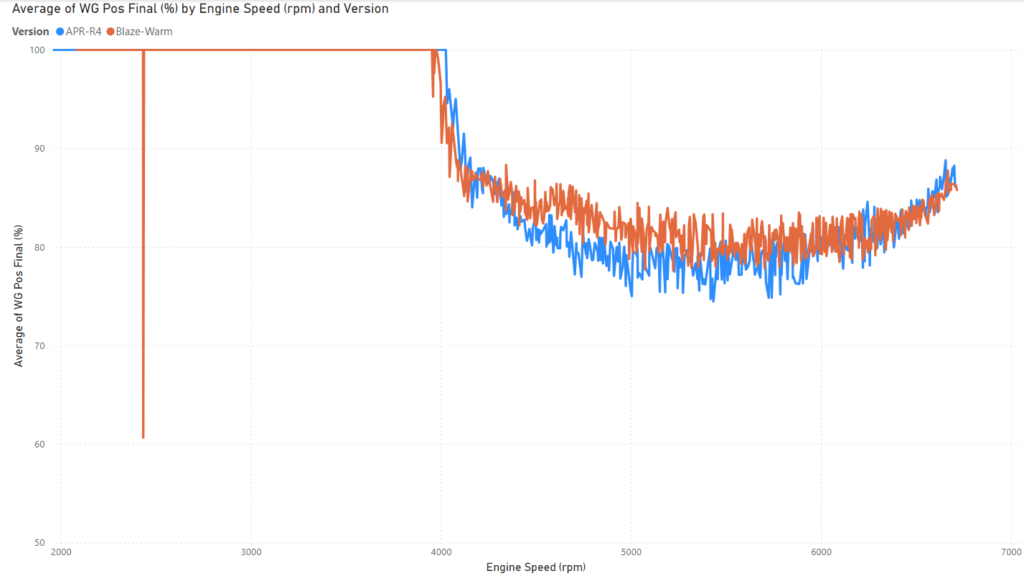
This outcome is significantly different from what EQT’s customer reported.
Joseph / EQT Results:
As the data logs from Joseph (EQT customer) show, the vehicle saw a substantial change in the WGDC when switching between the intakes.
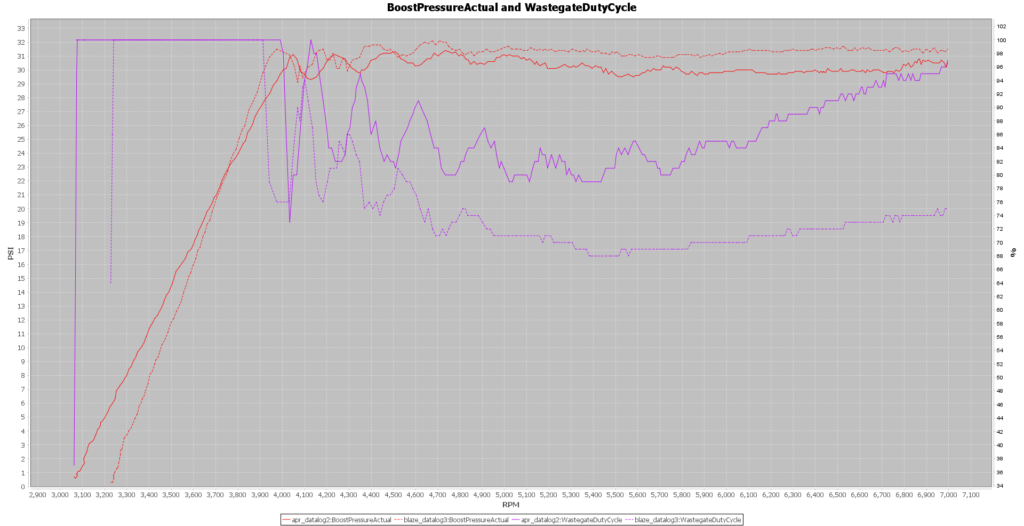
These tests were made with a larger difference in the IAT, approximately 10-12F higher compared to approximately 5F in the comparison above.
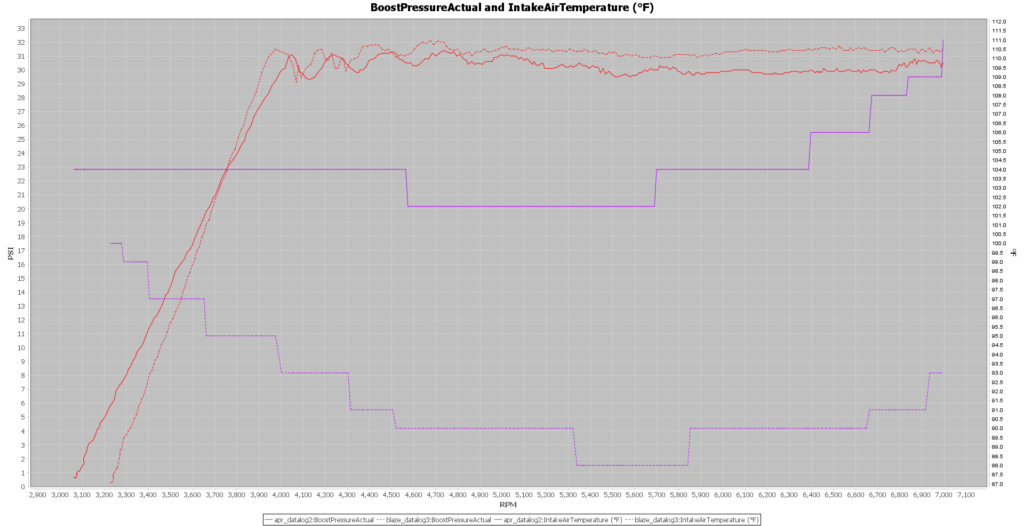
This might indicate that the Outside Air Temperature was higher when logging the APR intake, but that measurement is not included in the data file.
It appears unlikely that the external conditions were different enough to cause the change in WGDC or even meaningfully contribute to it.
This raises the question of what else was different between the setups that could have caused the significant difference in WGDC since the two cases use the same intakes. The Next Steps section will address this subject.
Crosscheck:
Since I was also recording the vehicle acceleration times while logging with these two intakes a comparison is made to see if any other significant effects might have changed performance in a way that the IAT and WGDC did not capture.
The sampling of acceleration times from 47 to 84 mph is shown in the table:

The effect size we are interested in must be chosen to determine how many samples should be recorded. For comparing acceleration times from 47 to 84 mph, I’ve selected a 0.1-second difference in time as the interesting magnitude of difference. Less than 0.1 seconds and the time difference is not large enough to be interesting. This is subjective.
A Power Analysis uses a 0.1-second difference in mean acceleration times as the magnitude of interest. Historical time variance in logging this type of data was used to calculate the effect size.
The power, the probability of finding an effect that is there, is set to 80%, and significance level, the probability of finding an effect that is not there, is set to 0.05%.

The minimum number of samples using each intake is eleven (11). This number was met and exceeded.
A t-test is made on the difference between the mean acceleration times using each intake. It is hypothesized to be zero (0).

The t-test results support the hypothesis that there is no significant difference in the mean acceleration times.
There is not likely to be another effect on vehicle performance that has not been accounted for.
Conclusions:
When switching between the APR PEX intake with MST inlet hose and V2 TIP and the Blaze Performance ATOM Race intake, the boost pressure curve and wastegate duty cycle differ minimally.
This result is consistent with intake flow testing performed with a PTS flow bench.
There is no significant difference in vehicle performance when using the APR PEX open intake or Blaze Performance ATOM Race intake.
Next Steps:
Data presented by EQT customer Joseph Galloway shows an approximately 20% change in the wastegate duty cycle between two data logs made with the APR intake and Blaze ATOM intake, with the APR intake requiring the additional wastegate percentage.
This is at odds with results obtained during street testing of the APR intake with MST inlet and TIP as well as bench testing of the APR intake with MST hose and DBV2 TIP.
As discussed at the site in previous posts, the difference in flow rates of high-performing intakes is minimal, but the difference caused by the turbo inlet elbow is significant.
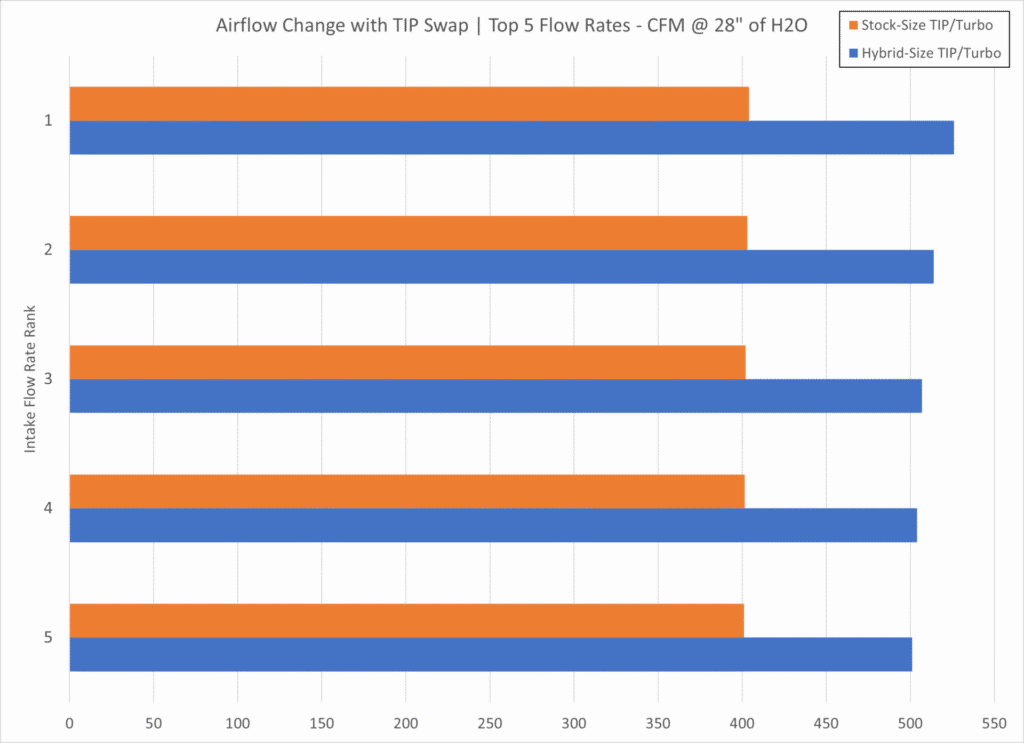
During the post discussing Data Checking of Joseph’s results, I pointed this out along with the fact that Joseph was using an APR turbo inlet elbow, a part designed for use with a stock-size turbocharger.
In the next step of this testing, the APR intake and a turbo inlet elbow designed for use with a stock turbocharger will be installed in the GTI, and the test will be repeated.
